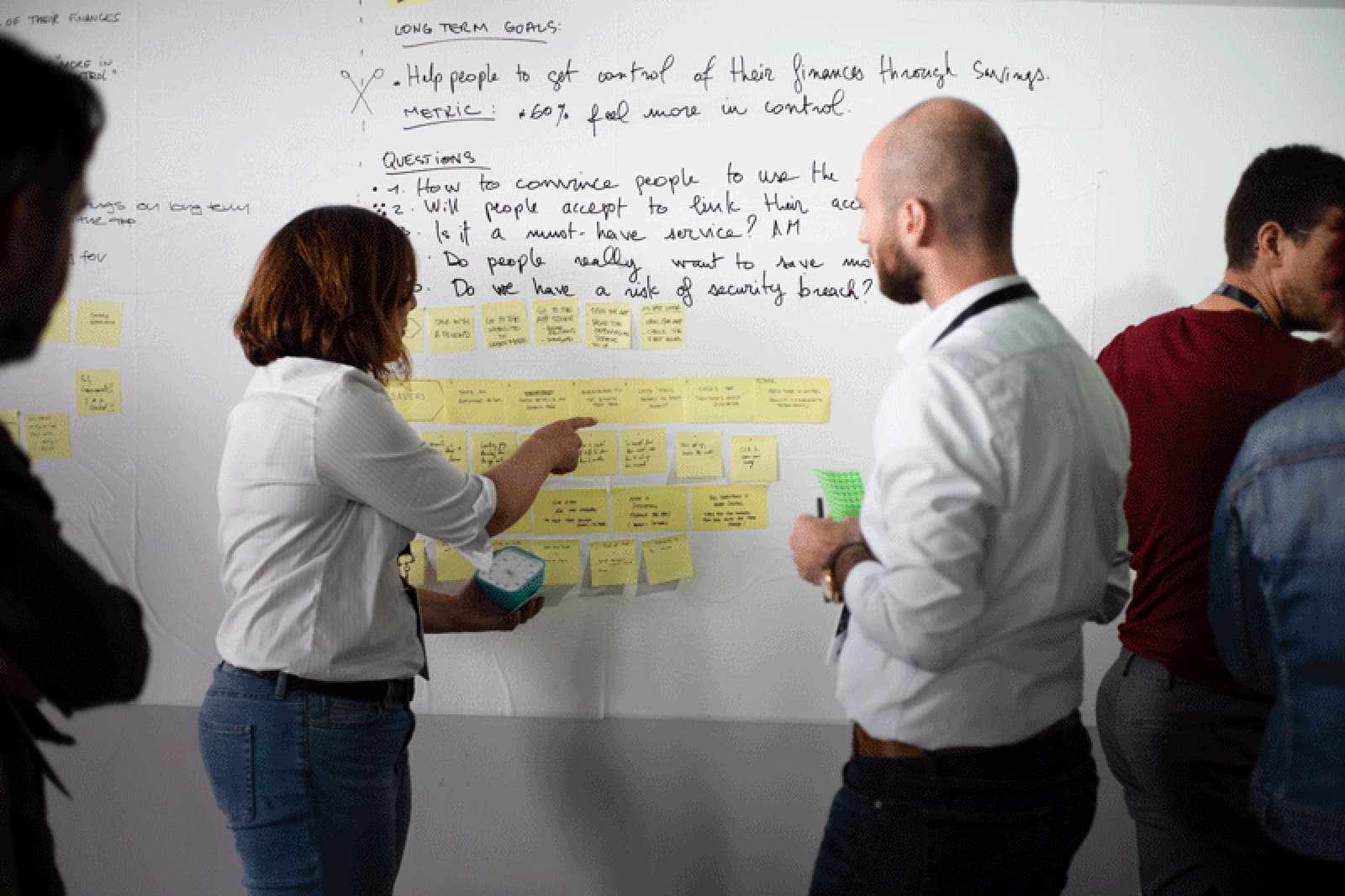The first day of the Sprint is about sharing knowledge and creating a kind of ‘common brain’ for the entire team. Specialists or senior employees will share their expertise, while the newest team members often bring useful ‘outsider’ perspectives on the issues at hand.
But to ensure that the right problems are addressed and useful solutions are imagined, they first need to be visualized and prioritized.
The ‘Map’ or ‘Experience Map’ is a visual representation of the current state. It’s a simplified version of similar UX techniques like user-journey mapping or service blueprints.
It is collectively created by the team on a large whiteboard. It shows a sequence of key steps. Very important: the MAP should not depict a desired future state but rather the current state of affairs (often unsatisfactory).
Depending on the sprint’s challenge, the map may be marketing-oriented or process-oriented.
Two examples:
Example 1
“The company is looking to capture the attention of millennials and devise a new marketing strategy to reach them.”
- In this case, we will map the current state of marketing initiatives (the acquisition funnel) and try to understand why it doesn’t reach the millennial target.
Example 2
“Our B2B partners waste a lot of time creating Excel spreadsheets on their own, even though we already provide them with data in a dashboard.”
- Here, it’s a business process. The challenge will be to understand the exact needs of the partners and why the provided dashboard is not being used enough or is insufficient.
The first day of the design sprint is a bit like playing Sherlock Holmes: not jumping immediately into the solution but taking the time to understand what is unsatisfactory about the current situation to envision higher-quality solutions.
